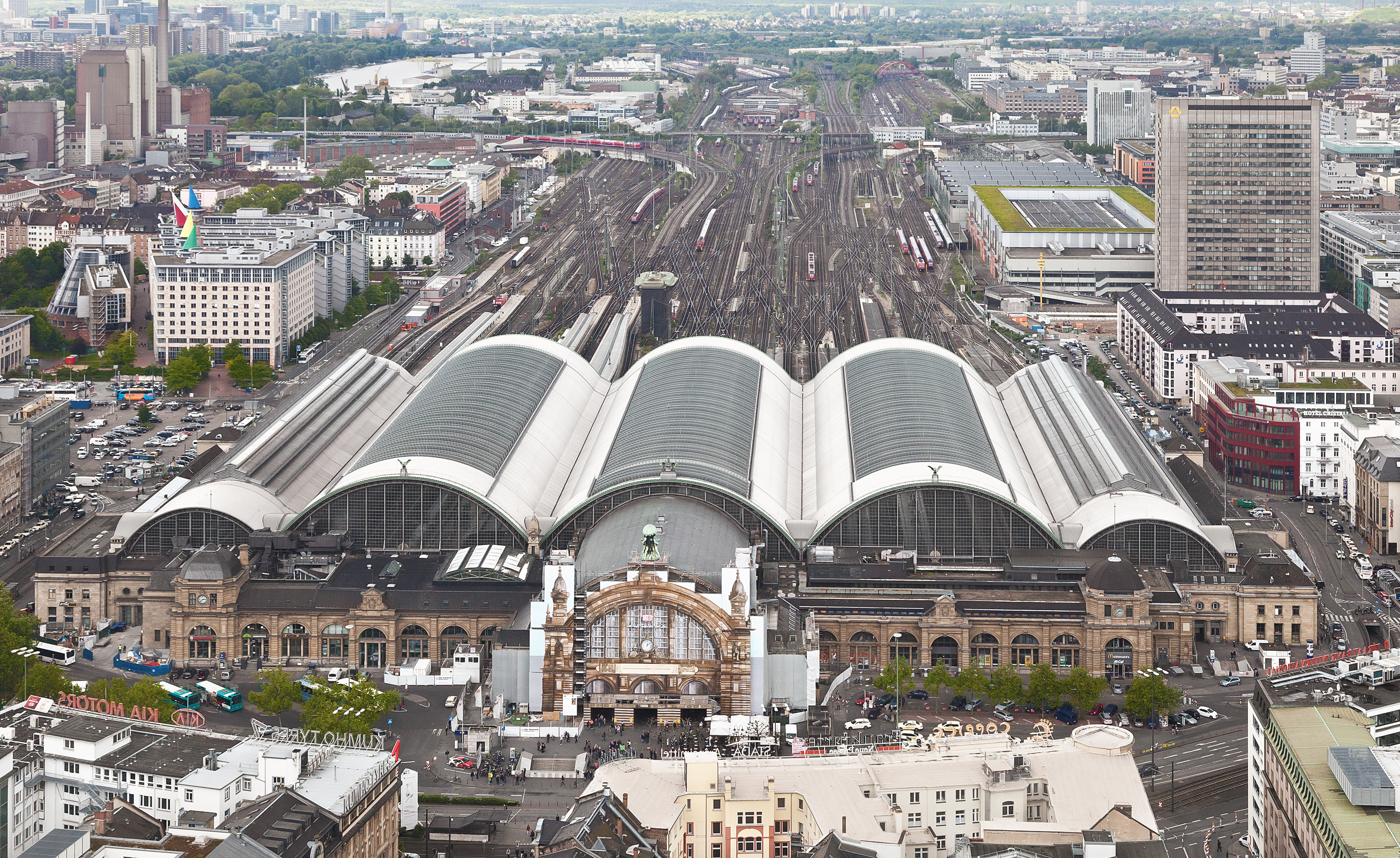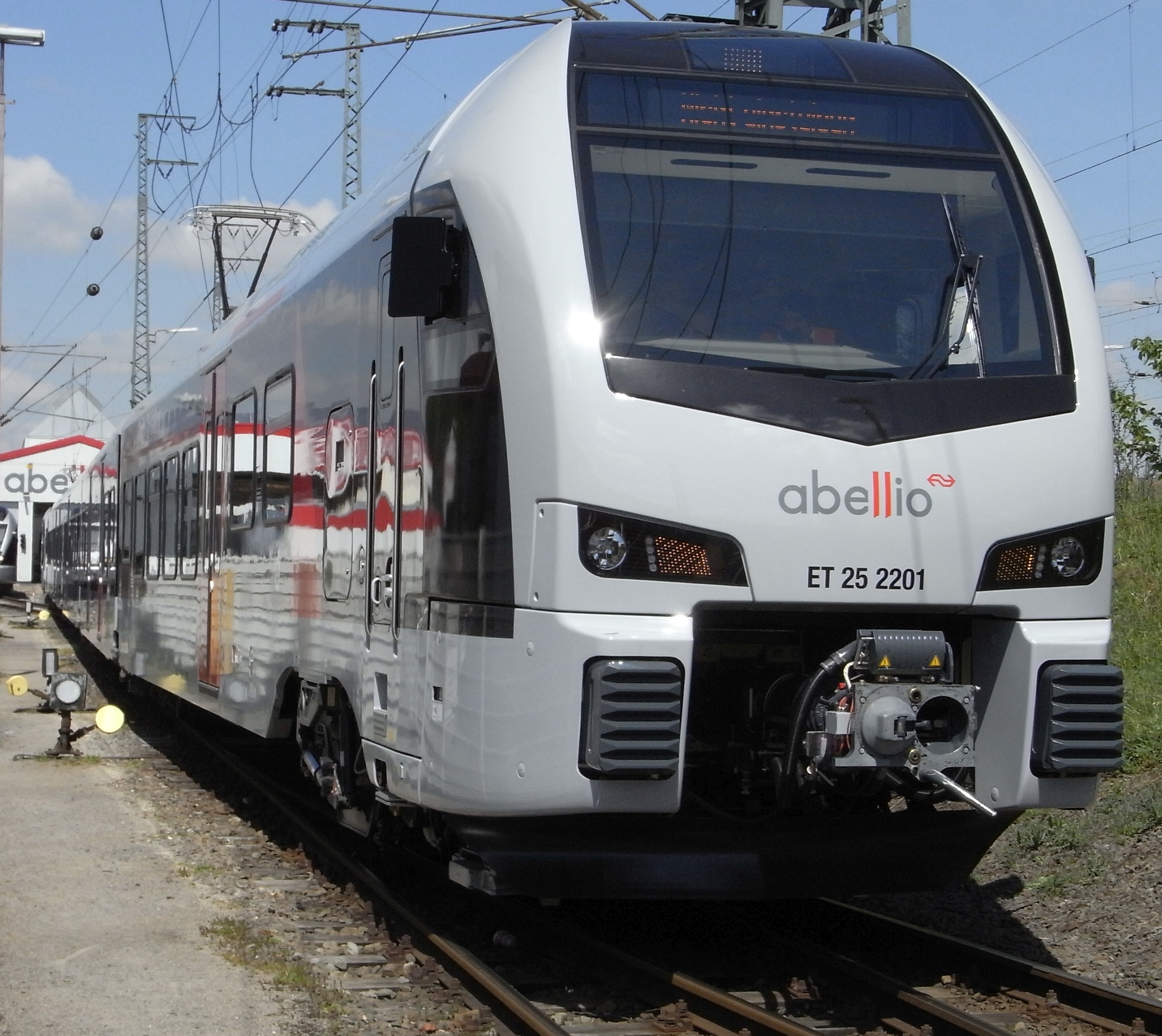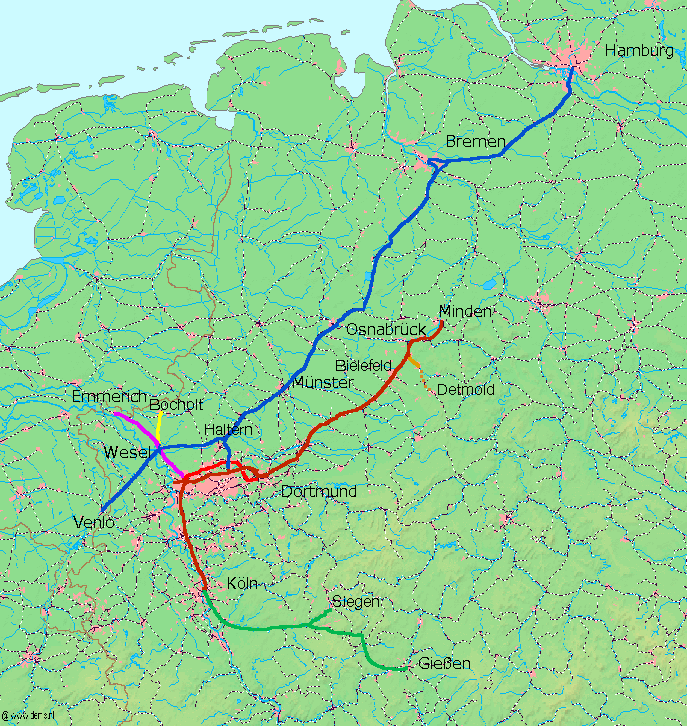|
Essen-Dellwig Station
Essen-Dellwig station is located in the city of Essen in the German state of North Rhine-Westphalia on the Duisburg–Dortmund railway, opened by the Cologne-Minden Railway Company on 15 May 1847. The station opened on 1 May 1891. It is classified by Deutsche Bahn as a category 6 station. The station is located 300m away from Essen-Dellwig Ost station. The station is served by Regionalbahn services RB 32 ( Rhein-Emscher-Bahn) and RB 35 (Emscher-Niederrhein-Bahn), providing a service every 30 minutes during the day on weekdays. It is also served by tram lines 103 of the Essen Stadtbahn The Essen Stadtbahn (german: Stadtbahn Essen) is a light rail (Stadtbahn) network in Essen and the two neighbouring towns of Mülheim an der Ruhr and Gelsenkirchen in the German state of North Rhine Westphalia. It forms part of the Rhine-Ru ..., operated at 10-minute intervals and bus routes 166 and 185, operated by Ruhrbahn at 20-minute intervals. References Rhine-Ruhr S-Bahn statio ... [...More Info...] [...Related Items...] OR: [Wikipedia] [Google] [Baidu] |
Essen
Essen (; Latin: ''Assindia'') is the central and, after Dortmund, second-largest city of the Ruhr, the largest urban area in Germany. Its population of makes it the fourth-largest city of North Rhine-Westphalia after Cologne, Düsseldorf and Dortmund, as well as the ninth-largest city of Germany. Essen lies in the larger Rhine-Ruhr Metropolitan Region and is part of the cultural area of Rhineland. Because of its central location in the Ruhr, Essen is often regarded as the Ruhr's "secret capital". Two rivers flow through the city: in the north, the Emscher, the Ruhr area's central river, and in the south, the Ruhr River, which is dammed in Essen to form the Lake Baldeney (''Baldeneysee'') and Lake Kettwig (''Kettwiger See'') reservoirs. The central and northern boroughs of Essen historically belong to the Low German ( Westphalian) language area, and the south of the city to the Low Franconian ( Bergish) area (closely related to Dutch). Essen is seat to several of the region's ... [...More Info...] [...Related Items...] OR: [Wikipedia] [Google] [Baidu] |
German Railway Station Categories
The approximately 5,400 railway stations in Germany that are owned and operated by the Deutsche Bahn subsidiary DB Station&Service are divided into seven categories, denoting the service level available at the station. This categorisation influences the amount of money railway companies need to pay to DB Station&Service for using the facilities at the stations. Categories Category 1 The 21 stations in Category 1 are considered traffic hubs. They are permanently staffed and carry all sorts of railway-related facilities, as well as usually featuring a shopping mall in the station. Most of these stations are the central (commonly referred to as main) stations (''Hauptbahnhof'' or ''Hbf'') of large cities with 500,000 inhabitants and above, though some in smaller cities, such as Karlsruhe Hauptbahnhof, are regarded as important because they are at the junction of important railway lines. Berlin, Hamburg, Munich and Cologne, the four biggest cities in Germany, have more than ... [...More Info...] [...Related Items...] OR: [Wikipedia] [Google] [Baidu] |
S2 (Rhine-Ruhr S-Bahn)
Line S2 is a S-Bahn line in the Rhein-Ruhr network. It starts in Dortmund Hauptbahnhof and runs westerly. During weekdays one service per hour runs each to Essen Hauptbahnhof and Recklinghausen Hauptbahnhof using Stadler FLIRT 3XL units. Line S2 runs over lines built by various railway companies: * from Dortmund Hauptbahnhof to Dortmund-Dorstfeld over the Witten/Dortmund–Oberhausen/Duisburg railway, opened by the Bergisch-Märkische Railway Company in 1862 * from Dortmund-Dorstfeld to Dortmund-Mengede over the Welver–Sterkrade railway, built by the Royal Westphalian Railway Company on 1 September 1878. *from Dortmund-Mengede to Gelsenkirchen Hauptbahnhof via Herne station over the Duisburg–Dortmund Railway opened by the Cologne-Minden Railway Company in 1847, *from Gelsenkirchen to Essen over the Essen–Gelsenkirchen railway, opened from Gelsenkirchen to Essen-Kray Nord by the Rhenish Railway Company in 1872 and from Essen-Kray Nord to Essen Hauptbahnhof by the Prussi ... [...More Info...] [...Related Items...] OR: [Wikipedia] [Google] [Baidu] |
Rhine-Ruhr S-Bahn Stations
The Rhine-Ruhr metropolitan region (german: Metropolregion Rhein-Ruhr) is the largest metropolitan region in Germany, with over ten million inhabitants. A polycentric conurbation with several major urban concentrations, the region covers an area of , entirely within the federal state of North Rhine-Westphalia. The Rhine-Ruhr metropolitan region spreads from the Ruhr area (Dortmund-Essen-Duisburg-Bochum) in the north to the urban areas of the cities of Mönchengladbach, Düsseldorf (the state capital), Wuppertal, Leverkusen, Cologne (the region's largest and Germany's fourth largest city), and Bonn in the south. The location of the Rhine-Ruhr at the heart of the European Blue Banana makes it well connected to other major European cities and metropolitan areas such as the Randstad, the Flemish Diamond and the Frankfurt Rhine Main Region. The metropolitan area is named after the Rhine and Ruhr rivers, which are the region's defining geographical features and historically its ... [...More Info...] [...Related Items...] OR: [Wikipedia] [Google] [Baidu] |
Essen Stadtbahn
The Essen Stadtbahn (german: Stadtbahn Essen) is a light rail (Stadtbahn) network in Essen and the two neighbouring towns of Mülheim an der Ruhr and Gelsenkirchen in the German state of North Rhine Westphalia. It forms part of the Rhine-Ruhr Stadtbahn. Like the Frankfurt U-Bahn, it is a mixed system of light rail and underground railway. One of its three lines, U18, runs completely free of intersections with other traffic. The other two lines are partly tramlines and partly underground lines. The sections of tramline have only a few sections that have no intersections with road traffic. Like all urban public transport in Essen, the Essen Stadtbahn is operated by ''Ruhrbahn'', a company owned by the Cities of Essen and Mülheim an der Ruhr. The transport companies of neighbouring municipalities are also involved with the operation of some lines under concessions. Operations The Essen Stadtbahn includes three standard gauge lines: U11, U17 and U18. The Essen tram netw ... [...More Info...] [...Related Items...] OR: [Wikipedia] [Google] [Baidu] |
Emscher-Niederrhein-Bahn
The Emscher-Niederrhein-Bahn (RB 35) is a Regionalbahn service in the German state of North Rhine-Westphalia. It runs hourly between Gelsenkirchen and Duisburg with Mönchengladbach. Its name refers to the Emscher river (which runs near Duisburg and Gelsenkirchen) and the Lower Rhine (which the service crosses between Duisburg-Hochfeld Süd and Rheinhausen-Ost). History Before 2016, there was already a service numbered as RB 35, operating under the name of ''Der Weseler''. It ran mainly between Wesel and Duisburg Hbf and was extended during the peak hour from Duisburg to Düsseldorf and once a day to Cologne, as well as from Wesel to Emmerich and it thus functioned to relieve the Rhein-Express (RE 5). From the timetable change of 2016, the route was extended beyond Duisburg to Mönchengladbach, which complemented the northern section of the Rhein-Niers-Bahn. The RE 5 was shortened to run on the Wesel–Duisburg–Düsseldorf–Köln–Bonn–Koblenz sectio ... [...More Info...] [...Related Items...] OR: [Wikipedia] [Google] [Baidu] |
Essen-Dellwig Ost Station
Essen-Dellwig Ost is a railway station in Essen, North Rhine-Westphalia, Germany. The station is located on the Essen–Bottrop railway and is served by S-Bahn The S-Bahn is the name of hybrid urban- suburban rail systems serving a metropolitan region in German-speaking countries. Some of the larger S-Bahn systems provide service similar to rapid transit systems, while smaller ones often resemble co ... services operated by DB. The station is located 300m away from Essen-Dellwig station. References {{reflist, 30em S9 (Rhine-Ruhr S-Bahn) Rhine-Ruhr S-Bahn stations Dellwig Ost ... [...More Info...] [...Related Items...] OR: [Wikipedia] [Google] [Baidu] |
Deutsche Bahn
The (; abbreviated as DB or DB AG) is the national railway company of Germany. Headquartered in the Bahntower in Berlin, it is a joint-stock company ( AG). The Federal Republic of Germany is its single shareholder. describes itself as the second-largest transport company in the world, after the German postal and logistics company / DHL, and is the largest railway operator and infrastructure owner in Europe. Deutsche Bahn was the largest railway company in the world by revenue in 2015; in 2019, DB Passenger transport companies carried around 4.8 billion passengers, and DB logistics companies transported approximately 232 million tons of goods in rail freight transport. The group is divided into several companies, including ''DB Fernverkehr'' (long-distance passenger), '' DB Regio'' (local passenger services) and ''DB Cargo'' (rail freight). The Group subsidiary ''DB Netz'' also operates large parts of the German railway infrastructure, making it the largest rail network in ... [...More Info...] [...Related Items...] OR: [Wikipedia] [Google] [Baidu] |
North Rhine-Westphalia
North Rhine-Westphalia (german: Nordrhein-Westfalen, ; li, Noordrien-Wesfale ; nds, Noordrhien-Westfalen; ksh, Noodrhing-Wäßßfaale), commonly shortened to NRW (), is a States of Germany, state (''Land'') in Western Germany. With more than 18 million inhabitants, it is the List of German states by population, most populous state of Germany. Apart from the city-states, it is also the List of German states by population density, most densely populated state in Germany. Covering an area of , it is the List of German states by area, fourth-largest German state by size. North Rhine-Westphalia features 30 of the 81 German municipalities with over 100,000 inhabitants, including Cologne (over 1 million), the state capital Düsseldorf, Dortmund and Essen (all about 600,000 inhabitants) and other cities predominantly located in the Rhine-Ruhr metropolitan area, the largest urban area in Germany and the fourth-largest on the European continent. The location of the Rhine-Ruhr at the h ... [...More Info...] [...Related Items...] OR: [Wikipedia] [Google] [Baidu] |
Cologne-Minden Railway Company
The Cologne-Minden Railway Company (German, old spelling: ''Cöln-Mindener Eisenbahn-Gesellschaft'', ''CME'') was along with the Bergisch-Märkische Railway Company and the Rhenish Railway Company one of the railway companies that in the mid-19th century built the first railways in the Ruhr and large parts of today's North Rhine-Westphalia. Founding The founding of the Cologne-Minden Railway Company in 1843 in Cologne ended a long struggle for a railway line between the Rhineland and the German North Sea ports, as well as the Prussian capital of Berlin. From the 1830s several railway committees in the cities of Düsseldorf, Cologne and Aachen attempted to find a solution with each other and the Prussian government. The focus of all these efforts was to avoid the Dutch duties on trade on the Rhine, which significantly increased the cost of import and export of goods via the Rhine. Some of the Cologne committee members under David Hansemann (1790–1864)—a merchant and banker fr ... [...More Info...] [...Related Items...] OR: [Wikipedia] [Google] [Baidu] |






.jpg)
